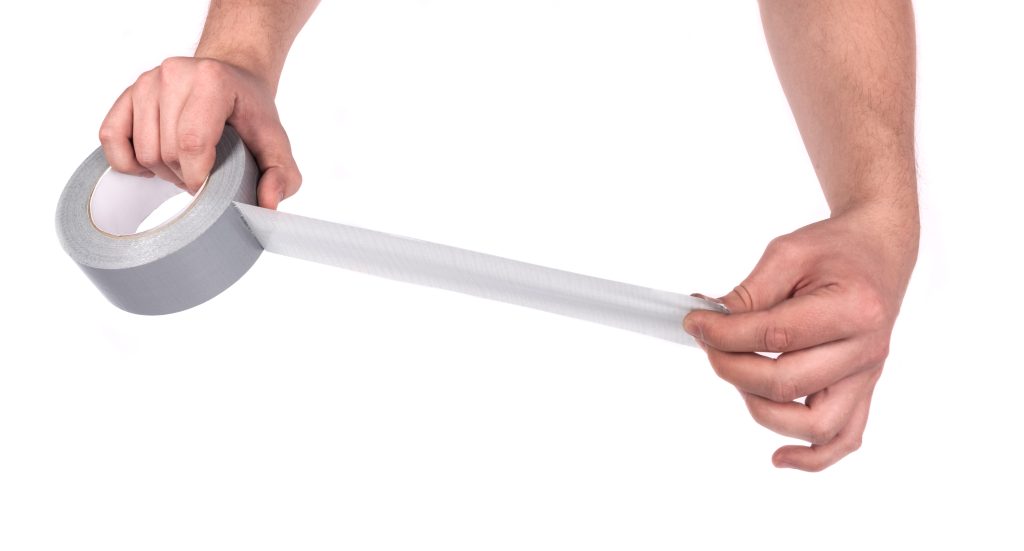Is It Safe to Tape a Tripped Breaker ‘On’?

Can You Tape a Breaker 'On'?
If you're wondering 'is it safe to tape a breaker into the 'on' position' or whether to bypass the breaker in a different way, it is important to understand what purpose your breaker is serving. A breaker, known correctly as a 'circuit breaker', is designed to break the circuit when there is an imbalance in the electrical load. When your breaker is exceeding the flow of electricity it is designed for, that circuit breaker will run hot and trip. When this happens, it is tripping and cutting off the flow of electricity to help keep yourself and your property safe.
Once your breaker trips, you can certainly try flipping it back into the 'on' position. If there is an ongoing electrical issue, it will immediately trip again. If this happens, some people considering forcing it into the on position which can be done with tape. Understanding now that your breaker tripping is a safety action against an excess of electrical current, it's easy to understand why it would not be safe to force it back into the 'on' position. Despite this easy to understand concept, however, a lot of homeowners want an immediate fix and will still tape their breaker to try to keep it on.
What Happens if You Tape a Tripped Breaker?
If you're wondering whether it is safe to tape a tripped breaker 'on', it really depends on the type of breaker. It is never a good idea to force a breaker into the on position, but it is less safe and more safe depending on the type of breaker. Newer breakers are designed to not engage and allow electricity to pass through it once it is tripped even if you force it back into the on position.
With newer circuit breakers, if you took a minute to Google the names of the different parts of it you will notice the toggle you can flip is not called a 'switch'. This is because circuit breakers are not designed to be a switch device. Their ability to function is not dependent on where you toggle its 'switch', but rather what it detects and how it trips itself when it determines an excessive electrical current. That's why with these newer circuit breakers it doesn't matter whether you tape the breaker into an on position, because its tripping mechanism is internal and is not based on the position of the manual toggle.
Much older circuit breakers, however, may not function in this way. In these cases, you want to be sure never to force the toggle into the on position. Keep in mind that if your breaker is tripping that it is doing it for a good reason to help protect you and your property.
Can I Bypass My Breaker?
When excessive electrical current is flowing through a circuit, you run the risk of fire or damaging things connected to that circuit. So, if you have a breaker that is tripping, that circuit breaker is trying to prevent a safety issue. With this in mind, you don't want to bypass your breaker. If you do, you run the risk of causing damage to wiring or attached devices as well as starting a fire. More so, if a fire or damage occurs, your insurance carrier may not cover the losses if they figure out you bypassed your circuit breaker.
What Do I Do if My Circuit Breaker is Tripping?
If your breaker is tripping, you have solutions. The first thing to do is to determine why it is tripping. A short circuit, loose connection, bad breaker, or an overload could be causing your circuit breaker to trip. Having the proper do-it-yourself knowledge or hiring a licensed electrician is your next step to troubleshooting what is causing your breaker to trip. Once you discover the cause, the repair is often as simple as replacing the breaker or repairing an appliance connected to the circuit, but it is never to tape the breaker into then 'on' position.
Considering Taping a Breaker into the 'On' Position?
Don't do it! Don't attempt to force your circuit breaker to function if it has tripped. Recognize that a tripped breaker is for your safety and call a licensed electrician to inspect it. Getting your circuit back up and functioning isn't worth the risk if there is a short, overload, or other issue occurring. Instead, take a moment to get it back into correct working order the right way. Give us a call for help with your breaker or any number of other services you may need help with.